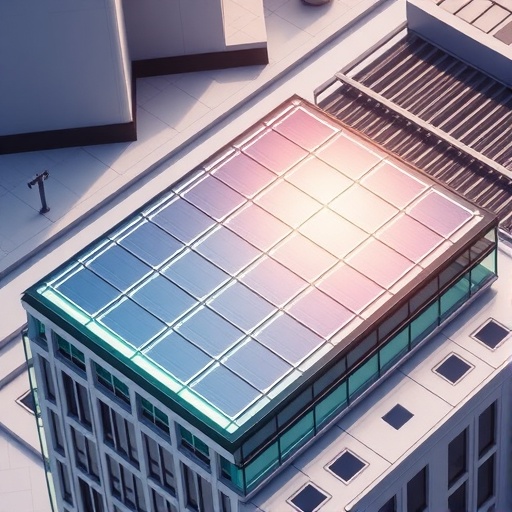Transparent solar cells represent a groundbreaking frontier in renewable energy technology, with applications that extend far beyond traditional solar panels. Their potential to be seamlessly integrated into windows, screens, and various architectural surfaces opens up a realm of possibilities for energy harvesting without compromising aesthetics. However, achieving an optimal balance between transparency and power conversion efficiency has long been a technical challenge, limiting their viability in practical deployment.
Among the promising innovations in this domain are semi-transparent organic photovoltaics (ST-OPVs), which combine efficient energy generation capabilities with an appealing visual design. Unlike conventional solar cells that are typically opaque and bulky, ST-OPVs utilize organic materials that can absorb light discretely, allowing a significant amount of visible light to pass through. This discrete absorption feature makes ST-OPVs ideal candidates for incorporation into building-integrated photovoltaics (BIPV), where preserving natural light and architectural appearance is crucial.
Researchers at The Hong Kong Polytechnic University (PolyU) have recently propelled this field forward by introducing an innovative evaluation parameter that quantifies the potential of photoactive materials for use in ST-OPVs. This parameter, known as the Figure of Merit based on Luminous Utilization Efficiency (FoMLUE), provides a nuanced and multifaceted metric, considering factors such as average visual transmittance, the semiconductor bandgap, and current density, derived from normalized absorbance data. Such a comprehensive screening tool is essential for pinpointing material combinations that excel not only in energy conversion but also in maintaining transparency and stability.
Employing FoMLUE, the PolyU team systematically screened a range of classical photoactive materials and identified ternary composite materials that maximize this figure of merit. These optimized ST-OPVs exhibit enhanced thermal insulation—a critical quality for reducing building energy consumption—as well as improved operational stability under prolonged ambient conditions. Remarkably, these devices demonstrated a record light utilization efficiency of 6.05%, which sets a new benchmark as the highest efficiency ever reported for any semi-transparent solar cell technology.
This breakthrough goes beyond material science; it extends into the realm of practical deployment as well. The researchers developed a transient simulation model that predicts the power generation performance and evaluates the consequent energy savings in building applications. This model was applied to 371 cities across China, taking into account regional climatic and geographical factors. The findings reveal that over 90% of these locations can achieve significant annual reductions in thermal load when utilizing ST-OPV glazed windows, emphasizing the broad adaptability and energy-saving potential of the technology.
Geographical analysis yielded particularly interesting insights: regions characterized by hot summers and warm winters manifest the greatest benefit from ST-OPV integration. Here, the annual total energy savings can reach as high as 1.43 gigajoules per square meter, underscoring the technology’s promise for climate-responsive architecture and sustainable urban planning, especially in regions where cooling and heating loads weigh heavily on energy consumption.
Fundamental to these advancements is the interdisciplinary approach combining material science, device engineering, and environmental modeling. ST-OPVs’ discrete light absorption spectra not only allow for high transparency but also facilitate the fine-tuning of solar window coloration to ensure a natural appearance under sunlight—a pivotal feature for market acceptance in architectural applications where aesthetics cannot be compromised.
Prof. LI Gang, a leading figure in energy conversion technology and endowed professor at PolyU, alongside Research Fellow Dr. YU Jiangsheng, spearheaded this research. Their pioneering work on the FoMLUE parameter has opened new directions for rapid and reliable screening of photovoltaic materials, a task which previously required laborious experimental iterations. This methodological innovation accelerates development cycles and brings us closer to commercial realization.
The implications of this research extend beyond traditional buildings. ST-OPVs can be instrumental in renewable energy vehicles and agriculture greenhouses, where integrating energy-harvesting capabilities into transparent surfaces could revolutionize energy management and sustainability in those sectors. The multifunctionality—combining energy generation, thermal management, and aesthetic integration—makes ST-OPVs highly versatile.
Looking ahead, the PolyU research team recognizes that long-term operational stability and scalability remain essential hurdles on the path to commercialization. Efforts are underway to enhance durability under real-world environmental stresses and to scale up from laboratory prototypes to large-area modules suitable for mass production.
As next-generation solar window technologies evolve, they hold the promise to redefine the built environment by transforming passive architectural elements into active energy generators. The record-breaking efficiency reported in this study places semi-transparent organic photovoltaics at the forefront of this evolution, signaling a future where everyday surfaces contribute tangibly to global renewable energy goals.
A comprehensive article elaborating on these innovations, titled “Semitransparent organic photovoltaics with wide geographical adaptability as sustainable smart windows,” has been published in the journal Nature Communications. This work encapsulates both the fundamental scientific insights and the practical implications of ST-OPVs, highlighting their readiness for real-world applications.
Prof. Li emphasizes the potential of these technologies to integrate seamlessly into sustainable building designs, without sacrificing architectural integrity. As solar windows become commercially viable, they promise to make renewable energy generation ubiquitous and visually harmonious with the environments we inhabit.
In conclusion, the intersection of advanced material science, device engineering, and environmental adaptability heralds a new era for solar energy technologies. The pioneering efforts at PolyU to achieve record efficiency in semi-transparent solar cells underscore how innovation coupled with strategic geographic analysis can accelerate the deployment of smart, energy-saving infrastructure on a global scale.
Subject of Research: Semi-transparent organic photovoltaics (ST-OPVs) and their application in building-integrated photovoltaics with enhanced efficiency and geographical adaptability.
Article Title: Semitransparent organic photovoltaics with wide geographical adaptability as sustainable smart windows
News Publication Date: 11-Aug-2025
Web References:
https://www.nature.com/articles/s41467-025-62546-8
DOI: 10.1038/s41467-025-62546-8
Image Credits: PolyU
Keywords:
Photovoltaics, Hybrid solar cells, Energy resources conservation, Thermal resistance, Heat waves, Solar energy




